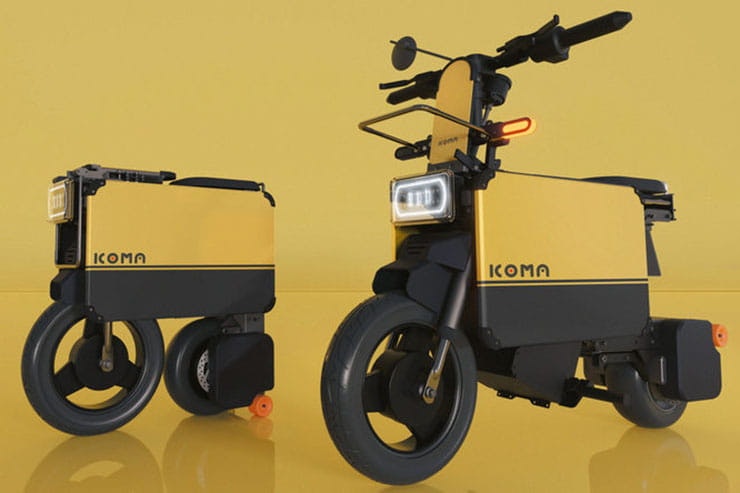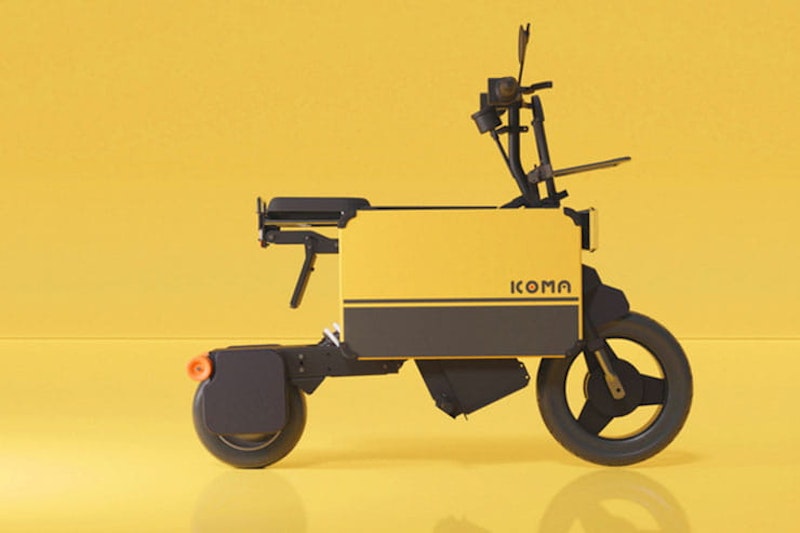Icoma channels the Motocompo’s spirit
By Ben Purvis
Has written for dozens of magazines and websites, including most of the world’s biggest bike titles, as well as dabbling in car and technology journalism.
09.01.2023
For a tiny bike that spectacularly failed to meet its manufacturer’s sales targets and was removed from sale 40 years ago after just two years in production, Honda’s Motocompo has left a huge footprint. Despite being just one of a host of oddball 80s Hondas – most largely forgotten today – and only being sold in Japan when it was new, the Motocompo commands some unreasonably high prices today and most riders are familiar with its name even if they’ve never seen on in the flesh.
While Honda has regularly shown concepts that play on the Motocompo’s ideas, and has recently filed several trademarks for names and images related to the name ‘Motocompacto’ that suggest it’s bringing the idea back, there’s been no production bike that successfully copies the Motocompo’s ability to fold into a luggage-like package to slide into a car’s boot since the original model’s demise in 1983.
That’s changing this year, though, with new Japanese firm Icoma promising to bring its folding motorcycle to market in April 2023.
An award-winner at the recent CES (Consumer Electronics Show) in Las Vegas, the Icoma’s relationship to the Motocompo is all too clear. It shares a similar, boxy shape and tiny dimensions as well as the ability to fold into an even smaller size, allowing it to fit into storage spaces or the luggage areas of larger vehicles. Like the Motocompo, the Icoma is intended to be a ‘last mile’ form of transport – allowing commuters to take it on a train or in their car to the outskirts of a city, and then to ride to their destination. It’s also envisaged as being useful on camping trips or simply as a city vehicle that’s small enough to be brought into the office rather than parked outside.
One huge step forward over the Motocompo is the Icoma’s use of electric power rather than petrol. For all its clever engineering, the Motocompo was awkward to fold up and would leave a distinctly petrol-y smell wherever it was stored. But as an electric bike, the Icoma is cleaner, easier to fold into an even smaller package than the original Motocompo, and wont pour petrol or oil onto the floor if you try to put it on its side or on its end.
In its rideable state, the Icoma measures a metre in height, 123cm in length and 65cm in width, but the seat, bars and both front and rear wheels can be folded in for storage, turning it into a square shape 69cm on each side and only 26cm wide. That’s genuinely briefcase-sized.
It’s heavier than the average briefcase, though, at 50kg, so there’s a pair of skateboard-style wheels at the back to allow it to be rolled around like luggage.
Specs include an electric motor rated at 600W in continuous use but with a peak power of 2kW (2.7hp) for shorter bursts, powered by a 12Ah, 51.2V battery pack that gives a range of 18.6 miles and a top speed of 24.8mph. However, since the whole bike can be brought indoors and charged in three hours from a standard socket, that’s probably enough for many citybound commutes.
The tiny 10-inch front wheel is paired with a comically-small 6.5-inch rim at the rear, with the electric motor somehow packaged into it so there’s no need for a transmission. The box-like centre section holds the battery, which incidentally doubles as a power bank for charging smaller electronics and can even be equipped with an optional AC inverter for a main-style output socket.
Icoma intends to make the bike available internationally and has initially put a focus on the USA as its first export market. There, the intention is to make the machine available from April 2023, with a price of $3999 (around £3300). Other international sales are expected to follow.
However, at the moment the firm’s FAQs suggest it’s not offering a warranty and that the bike is designed to meet Japanese standards, leaving customers to sort out registration and any adaptations needed to achieve that in their local markets. A self-assembly version is also under consideration.
Share on social media:

